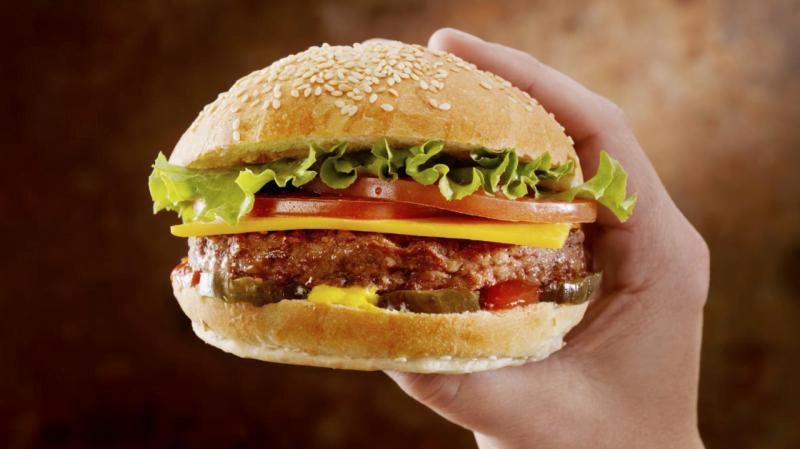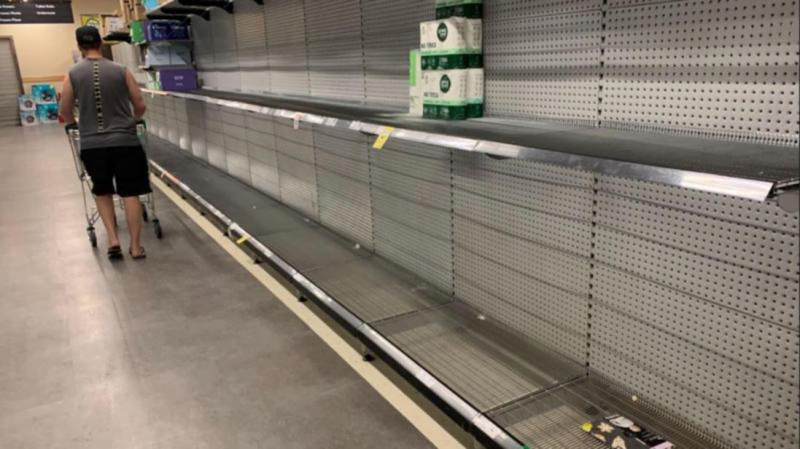COVID-19 disruptions to the fresh produce supply chain have reinforced the necessity and benefits of the central markets systems.
While reports emerged over the past two years of major supermarkets struggling to keep vegetables and fruit on shelves during various lockdown periods throughout Australia, a vast majority of the independent produce retailers remained stocked and servicing customers due to their buying from wholesale markets.
The Australian Bureau of Agricultural and Resource Economics and Sciences’ (ABARES) March Quarter Agricultural Commodities Report noted that in the late half of 2021-22, there were large disruptions to the distribution networks of major supermarkets.
“This has been contrasted with less disruptions to smaller retailers supported by more de-centralised wholesale markets,” ABARES said.
“Consequently, this has re-ignited questions about the performance of various food supply chains in Australia, and which of them stand to benefit consumers and producers more broadly.
“Major supermarkets operate long food chains that transport, distribute and supply vast amounts of consistent quality goods across Australia to reach a greater number of consumers.
“Such operations have helped to reduce transportation and distribution costs, address issues of asymmetric information typical in food safety and quality, and better deliver convenience and savings to consumers through a wider array of affordable farm products in one place.”
These benefits though were compared with the smaller retailers and greengrocers which find efficiencies and savings in shorter chains.
“They often see less throughput than the major supermarkets in their area but offer a more customised shopping experience through speciality products not found in supermarkets,” the report said.
In a February newsletter update, Meegan George, chief executive officer of Freshmark, which represents growers, wholesalers, retailers and customers within the Sydney and Newcastle Markets, said the Omicron variant showcased the success of the two-tiered supply chain within the central markets system.
“Whilst Coles and Woolworths are still experiencing produce shortages, the simplicity of the wholesaler/independent retailer’s operating model means transporting goods is far easier and retailers are nimble enough to buy produce daily and place it on their shelves a short time later,” Ms George said.
Independents rise above
THE independent greengrocer marketing campaign “A Better Choice” has been declaring the benefits of the central markets system throughout the pandemic through various online articles.
In February, A Better Choice participant Anthony Patti, store manager at Brunswick’s La Manna Fresh, Victoria said independent businesses were a lot simpler.
“The farm sends it to the market, we buy it from the market and take it back to the store… supermarkets take it to their warehouses, which is an additional link in the chain where something can go wrong,” Mr Patti said.
Queensland-based Luke Boulous, Westridge Fruit and Vegetables, Toowoomba echoed those thoughts.
“Our competitive advantage of being an independently owned and operated family business is the fact we attend the markets ourselves, handpicking our own produce,” he said.
“Within a couple of hours of us attending the markets at 4am, the stock is back at our store and on our shelves before lunch the same day.”
Peter Maniatis of Superior Fruit, Graceville, Qld said although supply and staffing issues had created headaches for all retailers, there was a flexibility to the purchasing schedule.
“Unlike larger supermarkets, we are not restricted by purchasing agreements to buy produce from a specified small number of growers,” Mr Maniatis said.
“We have the liberty of accessing fresh produce from all growers across Australia that supply into the wholesalers at the Brisbane Markets from where we source our produce for our customers.”
Outlook tackles produce supply chain
THE issue was also up for discussion during ABARES’ Outlook 2022 horticulture session on March 3 which featured guest speakers, Queensland vegetable grower and Kalfresh managing director Richard Gorman, Fresh Markets Australia‘s Shane Schnitzler representing the central markets system, and Coles‘ Tim Nitschke.
In outlining the throughput of the central markets, Mr Schnitzler said more than $7 billion worth of produce goes through the system, representing 4 billion kilograms per year.
It employs more than 20,000 people directly or on site, supplying more than 2700 independent fruit and vegetable retailers and 18,700 food service businesses which rely directly or indirectly on the markets.
He said like many businesses, COVID hit the central markets hard but the resilience of the workers shone through.
“The pandemic has provided a win for independent retailers” Mr Schnitzler said.
“There haven’t been the same challenges for the independents as the majors as they mainly get their produce out of one central markets system and the central markets did not have supply issues.”
“Wholesalers and growers with good working relationships, some decades long, continued with a good flow of information in relation to the changing of demand and supply
“The diversity of the central markets supply chain customers means that produce can be marketed widely and not exclusively to one sector.
“The independent retail sector experienced a very high level of demand across all produce, particularly hard produce.
Supermarket model adapted as well
HUNDREDS of growers operating from more than 1500 parts of the country supply to Coles’ seven distribution centres which put through 750,000t of produce per year to 835 stores.
Coles’ Tim Nitschke said the supermarket giant’s supply system remained robust mainly due to staff working harder to get supplies through.
“The challenges of COVID brought about an unprecedented level of disruption to our supply chain and the way industry has come together to feed people all over Australia has been nothing short of amazing,” Mr Nitschke said.
“The efforts of growers and retailers working together all over the country to support their local communities has been one positive in a very challenging few years.”
He said the increased demand in online buying from customers with high quality expectations that have “bigger baskets and shop less often” added pressure to the supermarkets model.
“There is little doubt that further changes will again test the resolve of growers around the country,” Mr Nitschke said.
Who gets what
THE horticulture industry has a history of concerns over disparity between what the grower is paid and the price consumers pay for the product.
It has been the stimulus for some larger growers to sign directly with major retailers.
Mr Nitschke defended the direct supply arrangement with large retailers.
“Our direct growers have the ultimate in price transparency,” he said.
“They obviously know what we pay them directly. They can walk into any of our stores, they can see our price on-shelf and obviously we are a publicly listed company so I think our growers have real price transparency with a company like Coles.”
Mr Gorman, a direct supplier to Coles, said he had no concerns over pricing visibility.
“We are not sitting here concerned about the transparency within our direct dealings with retailers. That’s definitely improved,” he said.
From the wholesale markets perspective, more recent procedures have toned down the perception of hostile grower to buyer negotiations.
“We are now under the watchful eye of a Horticulture Code of Conduct as well so there’s a stack of transparency involved in the transactions compared to what there may have been previously,” Fresh Markets Australia’s Shane Schnitzler said.
Supply and demand reigns supreme
ALL speakers agreed that ultimately, supply and demand dictated what direction crops went and what they were worth.
The first Victorian lockdown prompted a dramatic increase in the purchase of hard vegetables (ie. potatoes, pumpkins, onions, etc), which Mr Schnitzler described as “Christmas times two”.
Coles also experienced a surge of fresh produce buying, particularly for lines such as chillies, herbs, leeks, garlic and onions which went “through the roof” according to Mr Nitschke.
He said part of this was fuelled by celebrity chefs doing online live streams as people searched for food preparation ideas.
“No doubt people are eating more at home than they would have been,” he said.
For large scale vegetable growers such as Kalfresh, seasonal elements will also dictate crop size and what happens to a bumper harvest.
“When we do get periods of abundant supply we push more onto the central markets and offer better prices and different things like that,” Mr Gorman said.
“I think over time with the changes in the way people buy produce, the relationships around the central markets will change as well.”
Mr Schnitzler said the fact the central markets system was able to absorb such waves, and go from short supply to oversupply of certain products very quickly, again highlighted the resilience of the system and those within it.
“Our independent sector, hats off to them, they moved really quickly; fruit boxes delivered to home helped that style – that was huge,” he said.
“It was just incredible we just got through that. Hats off to everybody in the whole supply chain actually.”
Handshakes and contracts still vital
REGARDLESS of supply method, relationships were also emphasised as a big factor to a successful supply chain.
“I think our relationships with our growers have evolved in a positive way over many years and not just over the past two,” Coles’ Mr Nitschke said.
“It’s easy to forget that the two (years) before the pandemic were two of the most challenging from a drought point of view so that increase in communication and collaboration has happened over a number of years has certainly held us in good stead.
“I think where the grower and retailer relationship has been really strong is on the back of fantastic communication; very open and transparent and we kind of know where we are going.
“But it’s also enabled us to have the conversation where we can help each other out as well.”
Another A Better Choice independent greengrocer participant, Leon Mugavin, The Leaf Store, Elwood, Victoria said those connections have helped him get through the period.
“The wholesale fruit and vegetable market is about relationships and helping each other,” he said.
“For example, if we can’t get the strawberries we normally buy from our regular supplier but he can organise to get some from a neighbour,” Mr Mugavin said.
“Same with just about every fruit and vegetable. I’ve bought produce from growers in the last four weeks that I rarely, if ever, buy from.
“We might argue about price and quality but we respect each other and ultimately work together to get the best for our customers.”
From a policy perspective, Mr Gorman said there needs to be better comprehension around how the food supply chain works.
“There is not an hour of the day that people don’t work. It’s not nine to five work; it never has, never will be,” he said.
Extracted from North Queensland Register



